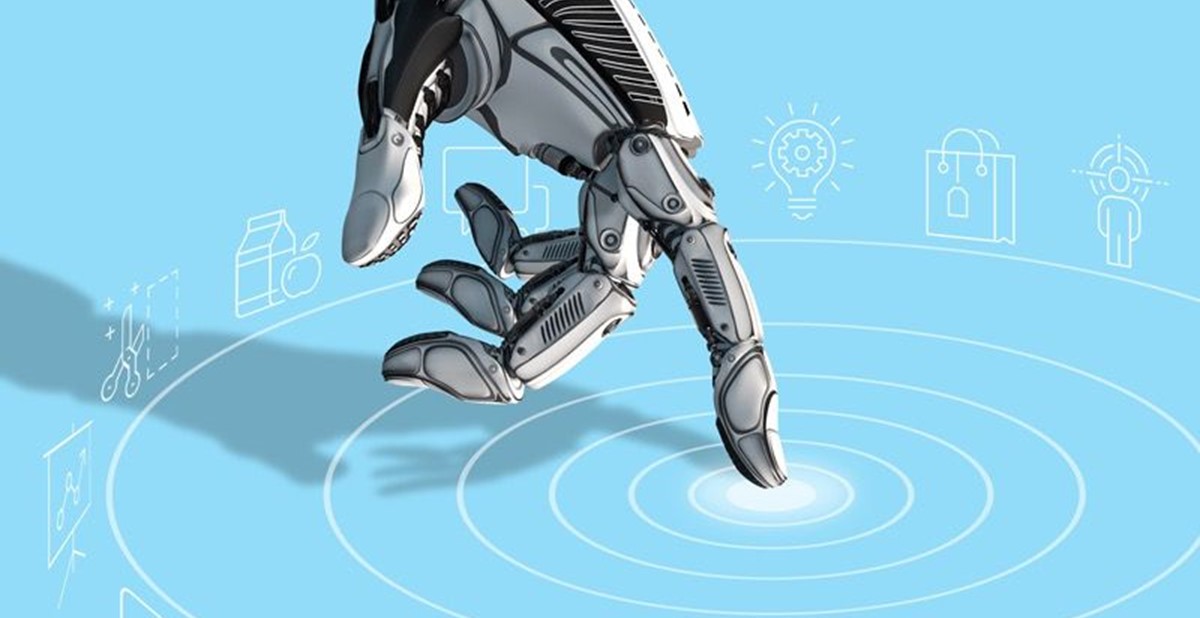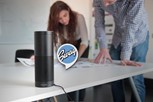Trending In Tech

The Consumer Electronics Show (CES) in January debuted a mind-boggling number of new technologies ranging from robot companions that display emotions to a dedicated exhibit area for smart cities.
“Technology moves so quickly that the trends are more short-lived,” says Dan Jellinek, executive vice president of supplier The Magnet Group (PPAI 338534). “In my opinion, watching Silicon Valley and keying in on the cell phone market will give us an idea of what’s coming down the road. I do feel that what I call the 'Alexa' trend is strengthening as artificial intelligence and home automation continue to mature and become more universal.”
Business Insider predicts that 80 percent of adults around the globe will have internet-connected smartphones by 2020. Users expect uber-connectivity and “smart” technology that they can access at their convenience and use in their daily decision making.
Justin Warriner, account manager for supplier MMI International Trade (PPAI 112486), says, “The future of tech, in my opinion, is going to be all about mobile devices and the accessories one can pair with them. Take the rise of QI wireless charging [wireless power transfer through electromagnetic fields] as an example. Everyone was showcasing a QI charger at this year’s PPAI Expo. Phone rings, which attach to the back of phones for easy carrying, have been extremely popular lately, as well.
“With the amount of computing power on one’s cell phone or tablet, we will be able to do absolutely anything on our mobile devices soon,” Warriner adds. “That means that we will be spending even more time than we already do on our mobile devices, which naturally means the value of real estate on a mobile device, for companies looking to make a name for themselves, will compound on a yearly basis.”
With innovations ranging from functional to fun, both tech products and traditional products with tech capabilities are in demand across all demographics as the Internet of Things marches forward.
Not everything will make it to the marketplace, but a variety of products from the CES show mirror some of the trends that are already influencing the promotional products industry. For example:
- Health and wellness trends have inspired an array of sensors to help track sleep habits and quality.
- Multitaskers demand products that perform double-duty, such as laptops that convert to tablets, and vice versa.
- Privacy and security are top of mind, thanks to scammers and recent high-profile security breaches.
- For the sports-obsessed, new apps that give real-time feedback to foster performance improvement help even weekend warriors excel in their sport of choice.
---
Case Study

Alexa, Please Build Our Brand
A client was looking for something new that would help them boost brand experiences and become a regular part of their audience’s lives. The team at distributor ROBYN pitched an iLuv speaker that had Alexa, Amazon’s virtual voice assistant, built in. Not only did they produce spec samples of the speaker, but they also created a custom Alexa skill in the form of an app for the client.
The app utilized Alexa’s News Brief feature, which allows users to configure a daily update that pulls news stories from a variety of content providers and sources. With the custom News Brief skill enabled, Alexa automatically inserted content from the client’s blog into the broadcast. The logo on the speaker promoted brand awareness, and the app ensured that the client would be top of mind as part of the user’s daily ritual.
Eric Granata, vice president of business development, says the client bought a large quantity of speakers, and the team at ROBYN is ready to deploy the app.
Source: ROBYN
---
Gaming: Not Just Child’s Play
When you think of video games, do you imagine an aimless group of high school nerds congregating in their parents’ basements to play Tetris?
If so, it’s time to reboot. According to game market researcher Newzoo, the industry reached $116 billion in revenue in 2017. The Entertainment Software Association (ESA) reports that more than 150 million Americans play video games, and 60 percent of Americans admit to gaming daily. The average gamer is 34 years old, and women represent a growing portion of the gaming population, at 33 percent.
Competitive video gaming, known as e-sports, is big business, attracting 258 million worldwide viewers in 2017. Like traditional sports, e-sports teams make money with advertising, sponsorships, product endorsements, player appearances and events.
According to ESA, gaming provides advertisers a way to reach a much sought-after younger audience, which is more difficult to reach through traditional channels. Over half of e-sports fans who regularly tune in to competitions are between the ages of 21 and 35.
A recent article in USA Today broke down esports essentials:
- Each video game, such as League of Legends, is considered its own sport, and players compete in teams or as individuals.
- Financial incentives are growing—the winning team of last year’s The International, a tournament of Dota 2 players, split a $10 million prize.
- Fans watch matches in sold-out arenas or via streaming services like Twitch, where they can tip players to show their appreciation of the players’ skills.
The marketing-savvy e-sports industry has embraced promotional products, with custom jerseys, accessories, drinkware, agendas and other merch that illustrates allegiance to popular gaming teams, or clans. As it becomes more of an accepted lifestyle, watch for increased customization of furniture, jewelry and housewares for this audience.
---
For additional related products, please view this story in the flipbook.
Terry Ramsay is associate editor of PPB.

